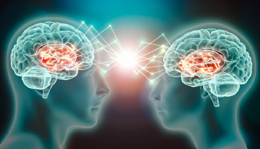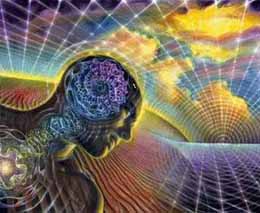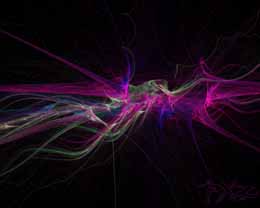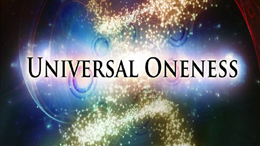Psychology
Apropos Parapsychology
Despite scepticism from mainstream psychology, parapsychology has been able to maintain its standpoint of studying interactions between living organisms and their external environment, that appear to transcend the known physical laws of nature.
No less a personality than William James himself supported the opening of the American Society for Psychical Research in 1885, while Jung’s concept of synchronicity has been used as an interpretative tool to explore parapsychology. The myriad experiences of life often show that many coincidences can turn out to be meaningful even without any causal relationship. If such synchronicity were absent, we would have missed many a wonderful literary piece and consummating experience!
K. Ramakrishna Rao finds it paradoxical that the Western traditions, which are so concerned to constantly devise practical applications of science for human uplift, should be so theoretical in the arena of consciousness (1). In fact, this theoretical perspective arising from the logical world-view has done great injustice to the field of parapsychology, where meticulous experiments with strict scientific rigour have been disregarded with unscientific disdain by rationalists. The bias against parapsychology within the contemporary scientific paradigm is a classic example of cultural bias. The methodology of contemporary parapsychology is excellent, and if physicists were reporting such amazing findings, as Braud’s paper on retroactive intentional influence, it would be all over the news (2). Presumably, parapsychology is not taught to psychologists and psychiatrists in training because it threatens the mechanistic paradigm.
Psi Phenomena
A sizeable and verifiable data has been actually collected in parapsychological research in support of the psi phenomena, shielded from the usual sensory perception and not available through inference or allied mechanisms. Such psi phenomena have included extrasensory perception (ESP), telepathy, precognition and the direct influence of mind over matter known as psychokinesis (PK). Rao emphasises that, “….psi may function beyond the familiar categories of understanding and may point to a state of being that cannot be properly classified as mind or matter. Psi phenomena raise the question whether there exists a realm of reality beyond the phenomenal world of appearance, which is primarily a product of our information-processing capabilities and mechanisms (3)”.
Let us look into some psi phenomena more specifically. Charles T. Tart describes:
“Consider telepathy. The human mind can occasionally have some sort of direct information transfer, factual information or emotional tone, ‘contact’ if you prefer, with other human minds…
“Consider clairvoyance. Occasionally a mind can directly know the state of the distant physical world, without using the senses of the body….
“Consider precognition. Occasionally a person can correctly predict a future event which is, in terms of widely accepted physical principles, inherently unpredictable…. Precognitively and clairvoyantly detected events have also included the outcomes of events based on quantum mechanical random event generators.
“Consider psychokinesis. Occasionally just wishing for a certain physical outcome has some detectable influence on that outcome. A striking example is biasing the outcome of an electronic computer-like device that randomly produces a binary outcome. The person causing the biasing, the agent, usually has no idea how the device works….
“These sound like the characteristics of minds — or perhaps souls — that may be quite enmeshed in the characteristics of matter most of the time but can somehow operate and (at least partially) exist independent of matter, minds that occasionally have access to nonphysical sources of information we cannot begin to adequately conceptualise; that perhaps may be capable of surviving physical death. And if these are characteristics of people, may there not be minds or a Mind much greater than our own? God (4) ?”
Micro-psi atoms
Perhaps one of the most remarkable example of psychokinesis is the amazing story of how two theosophists, C.W. Leadbeater and Annie Besant (who died in 1933 and 1934 respectively) began experimenting in 1895 with their clairvoyant powers of “micro-psi” magnitude to unravel the nuclear structure of all the naturally occurring 92 elements down to the “quark” and “sub-quark” level much before the discovery of isotopes of several elements by Aston in 1912 with his newly discovered mass spectrograph.
With sheer will-power, they had discovered “micro psi atoms”, which were symmetrically arranged groups of particles or points of light bound together in rapid complex orbital motion. This description predated Rutherford’s discovery of the atomic nucleus. The micro psi atoms were further broken down to quasi-nuclear matter which in conventional parlance may be labelled as quarks and subquarks. Though the concept of sub-quarks has not been yet accepted by science, Leadbeater and Besant’s description of 3,456 quasi-nuclear particles during their step-wise disintegration of gold was corroborated by Stephen Phillips in 1980.
It is presumed that the supercollider accelerator whose construction was abandoned could not have broken the nucleus into sub-quark components to the extent that was achieved by psychokinetically imparting tremendous energy to the atomic system! During their pursuit of occult chemistry, Leadbeater and Besant had discovered that all matter essentially consisted of bubbles or holes in space “like pearls upon an invisible string”. Stephen Phillips later linked this insight with the “Super String Theory” of contemporary particle physics (5).
Siddhi and cognitive anomalies
The micro-psi exercised by Leadbeater and Besant is in Indian parlance a siddhi (a realisation accomplished through spiritual power or psychic ability) termed as “Anima” in Aphorism 3.26 of Patanjali’s Yoga Sutras, which states that a yogi can attain the knowledge of the hidden and smallest through the light of supra-physical faculty. Rao describes that while parapsychology in Indian parlance can be called the science of siddhis, in Western professional description, it is the study of cognitive anomalies (6).
The term cognitive anomalies finds acceptance because psi phenomena deal with information acquisition and are therefore cognitive, but as they do not fit with current rational conceptions of cognition, are better considered as anomalies. Rao comments that the sharp division between the natural and supernatural and between subjectivity and objectivity, as is prevalent in the Western mindset, prevents a full exploration of psi phenomena in the West, where at best the accumulated data would merely point to the existence of some type of cognitive anomaly.
Sri Aurobindo’s insights
In contrast, the Indian tradition would offer fresh direction and impetus to the study and exploration of psi phenomena. In fact, a detailed study of the ‘Inner Being’ or subliminal personality that stands behind the Outer Being (which is studied as “personality” in contemporary psychology), described by Sri Aurobindo, offers plausible explanations to many of the psi-phenomena and provides a heuristic scope of further exploration.
Some of the really anomalous psi phenomena (anomalous in the true sense of the term like hallucinations and pseudo-intuitions and not just because they do not fit with the rational mindset) may be traced to the ‘intermediate zone’ between the ‘inner’ and ‘outer’ beings (the subliminal personality and surface personality respectively) of which Sri Aurobindo has left a detailed account (7). What is deemed anomalous and unnatural to the mechanistic mindset becomes spontaneous, though appearing to be supernatural in mystic parlance.
Universal Oneness
What is important is to acknowledge that consciousness together with its attributes of will and volition are non-local and therefore unconstrained in time and space. Therefore, it can be assumed that at some level all the things in the universe are inter-connected in some way or the other. Rao considers this as a universal oneness to which most religions refer (8). If parapsychology establishes the authenticity of psi and the non-local perspective of psychic phenomena, we may realise the connection between the spiritual world-view and scientific world-view.
Relation to health
In an interesting overview, William Braud demonstrates that if subjects are able to influence the bodily systems of other subjects, mentally and at a distance, then implications emerge of mental or spiritual healing. Studies suggest that attention and inattention focused upon other subjects were to either facilitate or impede various biological processes. For example, it was found that subjects were able to increase and decrease the autonomic nervous system activity of other persons, mentally and at a distance. Employing similar strategies it was also found that subjects were able to protect their own and others’ red blood cells (i.e., to decrease the rate at which the cells broke down and died under osmotic stress), mentally and at a distance using strategies of attention, intention and visualisation of desired outcomes.
Braud also found that the factors known to facilitate psi functioning sorted into three clusters that matched the three familiar virtues of faith, hope and love. These were the virtues eulogised in all spiritual traditions. Faith is related to belief, confidence, trust and these factors enhance psi functioning. Hope is confident expectation that facilitates psi functioning. The healer’s feeling of love for the healee or the healee’s surrogate and strong positive feelings of merging and interconnectedness may facilitate positive outcomes.
Moreover the reduction of egocentric motives is believed to facilitate psi success. Braud closes with a seminal quote from William James, “If the doors of perception were cleansed, everything would appear to man as it is, infinite (9)”.
References
1. Rao KR. Consciousness Studies: Cross-Cultural Perspectives. Jefferson NC, USA: McFarland Publishing; 2005, p. 314
2. Basu S, Miovic M. Consciousness-Based Psychology — Sri Aurobindo’s Vision of Yoga, Health and Transpersonal Growth. ed. Pondicherry: Auroshakti Foundation; 2022, p. 37.
3. Rao KR. (ed. Tart CT). Some Reflections on Religion and Anomalies of Consciousness, In Body, Mind, Spirit — Exploring the Parapsychology of Spirituality, Charlottesville, USA: Hampton Roads Publishing; 1997, p. 75.
4. Tart CT. ‘World Parliament of Superstition? Scientific Evidence for a Basic Reality to the Spiritual’. In: Body, Mind, Spirit — Exploring the Parapsychology of Spirituality, pp. 46-47.
5. Srinivasan M. The Hindu, Sunday Magazine, (30.10.94, 6.11.94, 13.11.94).
6. Rao KR. ‘Indian psychology, parapsychology and spiritual psychology’. International Journal of Yoga Philosophy, Psychology and Parapsychology 2013; 1 (1): 4-14.
7. Basu S, Miovic M. Consciousness-Based Psychology.
8. Ed. Tart CT. Some Reflections on Religion and Anomalies of Consciousness, p. 77.
9. Braud W. (ed. Tart CT). Parapsychology and Spirituality: Implications and Intimations. In: Body, Mind, Spirit — Exploring the Parapsychology of Spirituality, pp. 142-45.
Share with us (Comments, contributions, opinions)
When reproducing this feature, please credit NAMAH, and give the byline. Please send us cuttings.





